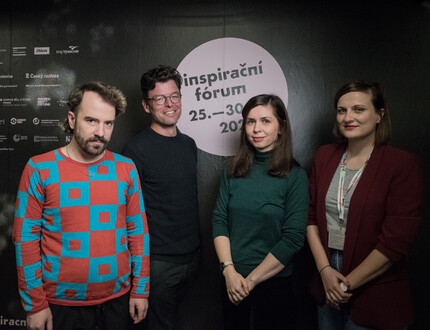Do new technologies relieve women from their age-old responsibilities? Or do they just bring new challenges? Is the so-called “smart home” more gender-equal than a traditional household?
At first glance, you’d expect that technology makes everything easier. But unfortunately, research shows that this isn’t always the case. In fact, many studies suggest that new technologies don’t lead to more gender-equal households. Quite the opposite—they often reinforce gendered household dynamics. That’s because smart home technology tends to concentrate power in the hands of one person—usually the man.
It’s not necessarily about direct commands like “do this.” A typical scenario is that a man chooses, buys, and installs the new technology. As a result, he gains both familiarity and control over it—becoming the main person responsible for operating it. Of course, this isn’t true in every household, but it remains the dominant pattern.
Is there data that shows how widespread this issue is?
This is a fairly new area of research, so data is still limited. What we do know is that smart homes are becoming increasingly common. According to a recent survey by Statista.com, there are around 90,000 smart homes in the Czech Republic. We lack more robust data, the closest we have is data from the Czech Statistical Office, which shows how many households in the Czech Republic use the internet or a smart TV. In Germany, about 5% of the population uses smart home devices. In the U.S. and some Asian countries, the figures are significantly higher.
In most households, men introduce and manage the technology, while women either rarely use it or are left out altogether.
The problem is that this data is rarely broken down by gender. However, qualitative research reveals a clear trend: in most households, men introduce and manage the technology, while women either rarely use it or are left out altogether.
What needs to change in order for technology to help close the gender gap in household labor?
There are two key paths forward—and ideally, we should pursue both.
The first is to make technology more accessible to women. That means asking more about women’s needs and preferences. It’s often said that women just need to build more technical skills—but I see that as the wrong approach. We should embrace the mindset of “fix the tech, not the women.” Instead of assuming women are incapable, we should design technology that’s easier to use.
The second path involves addressing gendered relationships with technology from an early age. We need to actively encourage girls to engage with tech, to play with it, to see it as theirs. Think about how boys tend to explore computers and games from a young age—learning how they work and how to control them. That kind of early experience helps build competence that many girls aren’t given the chance to develop.
You conducted research in the U.S., in the heart of Silicon Valley. What did you find there?
It was a pilot study—more of an initial mapping of the issue. I wanted to take advantage of being in Silicon Valley to talk directly with the people who develop and sell these technologies.
The market there is highly developed—smart homes are common even among average consumers. I started by trying to understand the landscape: what technologies are in homes today, what’s considered modern, where the market is headed, what people use, and what they’re accustomed to. From that, other insights emerged. One key observation: smart tech vendors primarily market their products around convenience. Reducing the amount of housework—or targeting specific types of tasks—rarely takes center stage.
Smart tech vendors primarily market their products around convenience. Reducing the amount of housework—or targeting specific types of tasks—rarely takes center stage.
However, when I spoke with women, it became clear they were using technology differently. Many mentioned smartwatches, for example, which help them manage daily life with kids and shopping bags in hand. These insights are now being developed further through the SmartUp project, funded by the European CHANSE program. We’re doing ethnographic research in households in the Czech Republic, Germany, and Poland.
How do women themselves perceive the idea of a smart home? Could the smart home trend be just another form of DIY project—predominantly used by men to make a symbolic contribution to the household—often without understanding the needs of the household?
That’s a good question, and we don’t yet have a definitive answer. Our perspective is still skewed—even our own research tends to start from traditional definitions of a smart home, which often assume a male user in control. We still don’t fully understand women’s experiences with smart technology.
But there is interesting work out there—for instance, by Katharina Graf, who studied smart kitchens. She broadened the definition of “smartness” to include tools like smartphones for looking up recipes or devices like the Thermomix.
Thermomix?
It’s not very common here yet—it was new to me too. It’s a high-end kitchen appliance that can prepare full meals like porridge, risotto, and soups. It’s the kind of tech that really helps women. Meanwhile, the devices we usually associate with smart homes are often things women aren’t interested in or don’t find especially useful. As a result, many feel indifferent or even annoyed by them—at best, they see them as a nice bonus, not something essential.
One woman told us that if anything ever happened to her husband, she’d want a big red button to turn off the entire system. So, in our current research, we’re asking women what they actually want. Their partners often don’t ask—they just choose whatever seems cool to them, without really considering what the household needs. I’ll never forget how one woman gave me an imaginary shopping list to send to her partner. It was full of practical items she’d already mentioned to him, but that he hadn’t prioritized. A new modem or a smart range hood? These choices reflect who has control over the home.
So men tend to buy what they find interesting or fun, rather than what the household actually needs?
That’s one way to look at it. For many men, it’s a hobby. Or they genuinely believe these gadgets will help—but in reality, they often don’t. A great example is robotic vacuum cleaners. We spoke with a woman who was home alone with kids and toys everywhere, living in a two-story house. In that context, a smart vacuum wasn’t very practical.
I’ve used a robotic vacuum in a household with a toddler, and I quickly realized you have to clean up everything before turning it on. And then you spend your time chasing it around, using your foot to block it from going where it shouldn’t. It felt like I was operating the machine more than benefiting from it. Someone still has to clean up.
Exactly. Technology can help with heavy-duty tasks like vacuuming or mopping—but someone still needs to tidy up, load the machine, and prep the area. It raises the question: would we even bother cleaning certain things if we didn’t have to prep the space for a robotic cleaner? This is just one example of how smart tech can provide convenience in one area while creating new chores or expectations in another.
Looking back at history, the automatic washing machine is often cited as a technology that was expected to dramatically reduce the time spent on housework. But it didn’t quite turn out that way. What’s behind this so-called Cowan paradox, as the researcher who coined the term describes it?
In her famous 1980 study, sociologist Ruth Schwartz Cowan explores the evolution of domestic life—from the first stoves to the 1960s and 70s. Her book bears the fitting title More Work for Mother. One illustrative example is carpet cleaning. In the early 20th century, families often had large carpets that needed to be beaten clean outdoors. This was a group effort: children helped, and men from neighboring homes might carry the heavy carpets out. The woman would then mop the floors. Enter the vacuum cleaner—and what changed? The men no longer help, the kids are no longer involved, and the woman does it all by herself. On top of that, the vacuum now covers more surface area, since wall-to-wall carpeting became fashionable.
Hygiene standards have also increased. Where carpets were once cleaned monthly, going that long without vacuuming today would be unthinkable. Social expectations have simply shifted. And with the industrial revolution, as more women stayed home, their domestic workload grew—not only due to increased expectations, but because these tasks began to multiply.
In addition to elevated hygiene standards, parenting standards are also increasing, and we’re seeing the rise of what’s called “intensive motherhood.” When technology saves time, that time is rarely used for rest. Instead, parents—especially mothers—are expected to invest that time in their children’s development.
It’s similar with washing machines. Sure, they simplify the washing process, but in the past, doing laundry was a communal task. Children would help, and women often washed clothes together. Today, we do it alone—sorting, washing, hanging, folding—and if you have kids, it can become a daily chore. So while technology may save time, we have to ask: for whom?
This also applies to parenting. Standards are rising, and we’re seeing the rise of what’s called “intensive motherhood.” When technology saves time, it’s rarely used for rest. Instead, parents—especially mothers—are expected to invest that time in their children’s development.
Do new technologies continue this trend?
New technologies often bring new forms of conflict. When the use of technology is unequal, so is the responsibility when it fails. If your house is broken into and you have a traditional lock, you're angry at the thief. But if you have a smart lock, and someone breaks in, you might also blame the person who installed the system—especially if you didn’t agree to it in the first place.
Why is the household so resistant to progress in gender equality? Is it just because it’s so closely tied to caregiving, or are other factors at play?
Domestic labor isn’t just physical—it’s also mental and emotional. It includes creating a comfortable atmosphere, nurturing relationships, and maintaining a safe space. These elements of care aren’t easily outsourced. But in our still heavily gendered society, caregiving remains closely associated with the female role.
Another major factor is economics. This division of labor is beneficial—though only for the system. Unpaid domestic work remains extremely cheap for society. If we paid people to fully care for a household, it would cost more than parental benefits. Like many care professions, housework is undervalued.
Should society aim to recognize care as labor and compensate it fairly? With an aging population and growing caregiving needs, wouldn’t something like a universal basic income be a viable path? It could recognize the unique nature of care in modern life and create room for what humanity has always longed for: community, safety, and mutual support.
Care is undeniably labor in many ways—but that’s not all it is. That’s why I don’t think we should redefine it solely as another type of work. Care theorists have long argued that its nature is fundamentally different.
We need to politicize care and make it a central category in public life—politics, education, and beyond.
Treating care purely as a job only reinforces patriarchal norms where labor is measured by output, sold on the market, and easily outsourced. But care isn’t like that. It can’t be outsourced entirely. That’s why care needs to be brought into the heart of our political and cultural conversations. Doing so would elevate values like solidarity, shifting them higher in our collective priorities. Strengthening care’s status in society has the potential to transform our world—and significantly improve the lives of women.
And where does technology fit into all this? There are pilot projects for “care” robots in nursing homes or long-term care facilities. Could technology ever truly replace caregiving?
I don’t think so. That idea stems from the logic: “If care is labor, let’s automate it.” While these technologies might be entertaining or even helpful—researcher Lucie Vidovičová led one such study here in the Czech Republic—they can’t replace the core of care, which is interpersonal and based on solidarity.
The COVID-19 pandemic really showed us just how crucial caregiving is. Politically, this was highlighted by leaders like Jacinda Ardern, who—unlike many of her male counterparts—brought empathy and care into her crisis response. We saw that this approach makes sense, and that it’s our responsibility to bring care into more areas of life. As the value of care rises, society will change accordingly.
Political theory teaches us that at the core of any cultural or political conflict lies a kind of “nodal point”—a hidden tension that blocks real progress. What’s that hidden point when it comes to today’s household?
For me, it’s recognition—of domestic labor and caregiving, both on a personal and societal level. That recognition is still largely missing, especially since this work is still mostly done by women. At the heart of the household are lingering gender stereotypes and assumptions. Breaking out of those roles would help immensely.
What would true recognition look like? Beyond raising awareness, what can be done?
Real financial compensation, for one. We need to stop pretending that caregiving is a “calling” that should be rewarded with a compliment and a small paycheck. True recognition means a fairer division of labor. Tasks like cleaning, cooking, and childcare are still done primarily by women in most households. In this arena more than any other, change begins with ourselves. When men take on their fair share of caregiving, the situation can begin to shift.
At the political level, that means creating better conditions for parenting, expanding access to affordable childcare, and so on.
You said the household is more than just a set of technical tasks—it’s also care, emotion, and other intangible values. The word that might best express all that is “home.” What should a home be?
I can’t give you a researched, textbook definition. But personally, I’d say a home is a place where I feel safe and at ease—a space I share with both human and non-human actors who help me shape it. By non-human actors, I mean things like technology or pets. I’m a techno-optimist, but I’m also cautious about its darker side—what’s called “techno-solutionism,” the belief that technology can solve all our problems. Sadly, this view dominates today. The biggest investments go into surveillance, data collection, and profit. If that version of technology wins out, then I’d have to call myself a techno-pessimist.
I often hear the cliché that technology is “neutral”—neither good nor bad—and just a tool. But in the context of the home, I’m not so sure. These technologies have become so embedded in our lives and daily routines that it’s hard to separate them from our reality. When new tech enters the home, it doesn’t revolutionize the system—it simply reinforces it.
Nina will speak at the Inspiration Forum in the program Smart Things That Save Time?: About the Problems That Technology Solves and Creates (Saturday, October 26, 12:30 - 2:00 PM).









